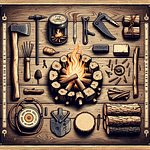Avoiding Common Mistakes When Trapping Animals
Trapping animals can be a necessary task for many reasons, such as controlling pest populations or relocating wildlife that has become a nuisance. However, there are common mistakes that people make when trapping animals that can result in harm to both the animal and the trapper. By avoiding these mistakes, you can ensure that the trapping process is effective and humane.
One of the most common mistakes when trapping animals is using the wrong type of trap. Different animals require different types of traps, so it is important to research the specific species you are targeting and choose a trap that is appropriate for them. For example, a large cage trap may be suitable for trapping raccoons or opossums, but it may not be effective for catching smaller animals like mice or rats. Using the wrong trap can result in the animal escaping or becoming injured.
Another common mistake is not checking traps regularly. Animals that are trapped can become stressed, dehydrated, or injured if they are left in a trap for an extended period of time. It is important to check traps at least once a day to ensure that any animals caught are quickly and humanely dealt with. This could involve releasing them back into the wild or relocating them to a more suitable location.
Improper placement of traps is also a common mistake when trapping animals. Placing traps in areas where animals are unlikely to pass through will not be effective. It is important to research the behavior and habits of the animal you are targeting and place traps in areas where they are likely to be active. This could be near their nesting sites, along their travel routes, or near sources of food.
One of the most important things to remember when trapping animals is to always follow the laws and regulations in your area. Many animals are protected by law and trapping them without the proper permits or licenses can result in fines or legal consequences. It is important to research the laws in your area and obtain the necessary permits before trapping any animals.
In conclusion, trapping animals can be a necessary task but it is important to avoid common mistakes in order to ensure that the process is effective and humane. By using the right type of trap, checking traps regularly, placing traps in the right locations, and following the laws and regulations, you can successfully trap animals without causing harm to them or yourself.



